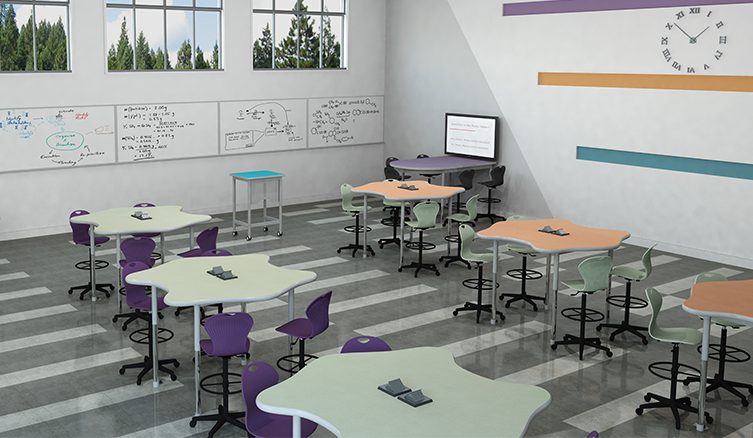How Classroom Furniture Affects Student Success
By Academia Furniture
Posted May 4, 2017 in Tomorrow's Classroom
Most educators, architects and designers involved in the school design and development process agree that improving opportunities for students inside the classroom is at the core of a successful project.
Studies abound illustrating how “environment can affect retention, attention, motivation, learning and academic achievement” mentions Victoria Bergsagel, Founder and President of Architects of Achievement in her article on GettingSmart.com. “Classrooms designed for active learning,” where physical space supports a focus on engaging experiences for students and faculty have a significant effect on student engagement.
So - how does classroom furniture play into student success?
- Physical movement:
Found in the Winter 2013 edition of the peer-reviewed Planning for Higher Education, students and faculty were asked to compare their experience in traditionally furnished classrooms with an environment designed to provide more flexibility in learning. Not surprisingly, the results showed that classrooms designed for active learning where physical space supports a focus on engaging experiences for students and faculty, had a statistically significantly effect on student engagement.
- Comfort:
Another important point highlighted in the article “4 Ways Furnishings Can Enhance the 21st Century Classroom” is the mention of student comfort. “Whether it’s wheels for mobility, plugs for devices or cushions for comfort, furnishings help create the environment best suited to an individual classroom’s needs” states Leila Meyer.
- Color:
According to the International Association of Color Consultants - North America (IACC-NA), a school’s physical environment has a powerful psycho-physiological impact on its students. “Appropriate color design is important in protecting eyesight, in creating surroundings that are conducive to studying, and in promoting physical and mental health.”
- Collaboration:
James A. Brady, AIA, REFP, executive director of Austin, Texas-based America's Schoolhouse Council, which is dedicated to excellence in planning, building and maintaining our nation's schools, makes the point that collaborative learning classrooms are based on a revised instructional model. “We have moved away from lecture-based, classrooms,” he says. “We are moving into a more authentic learning that parallels the work environment”.
A collaborative learning classroom requires a variety of possibilities for presenting, creating and reflecting. Does your school design projects meet these goals?
